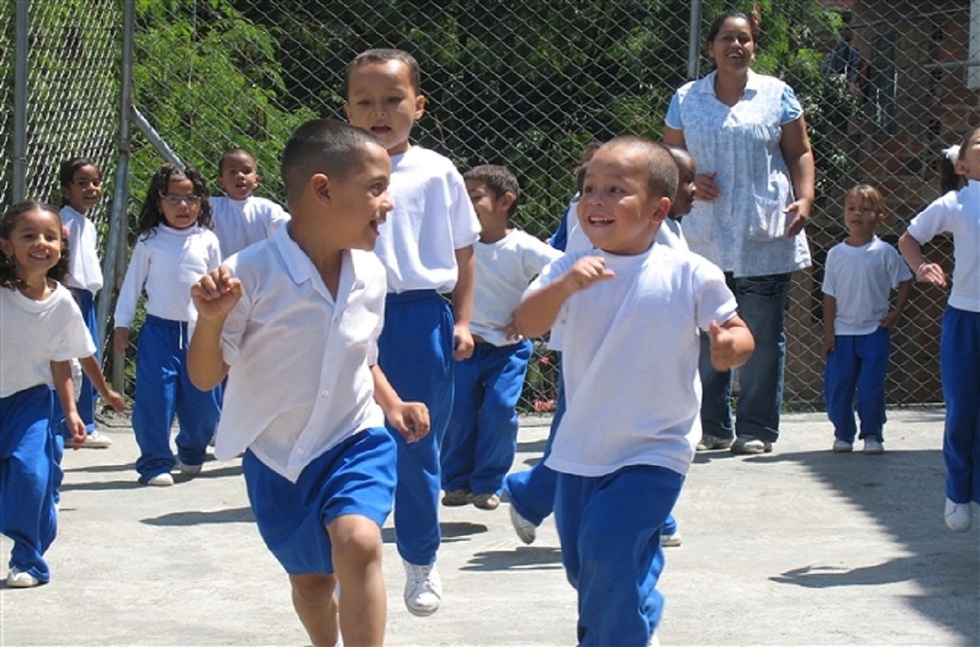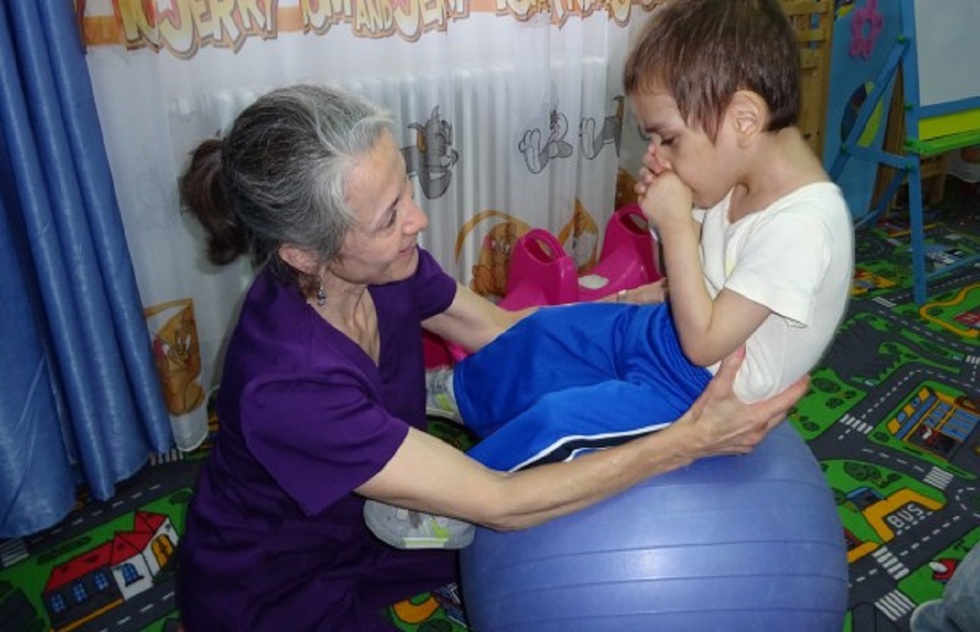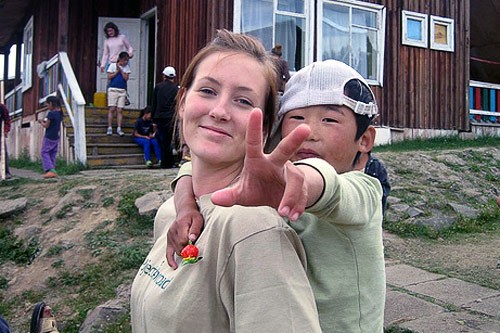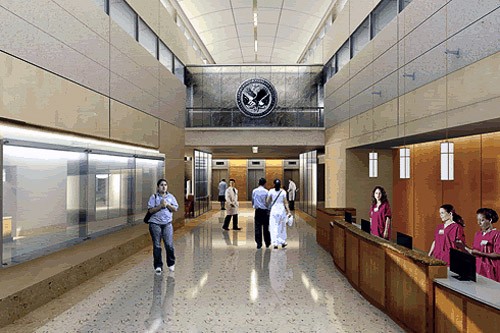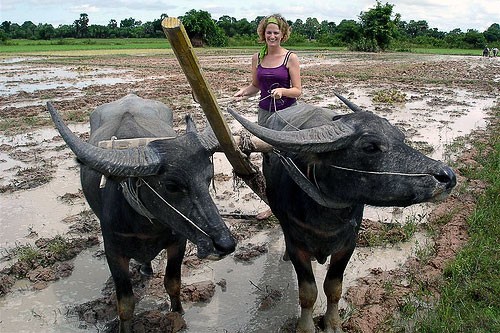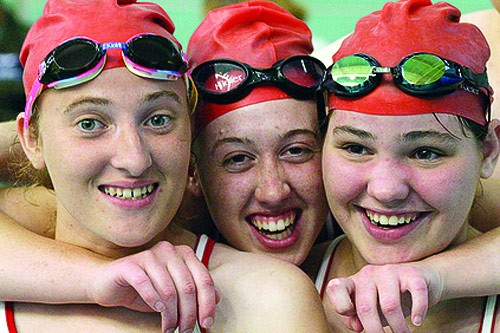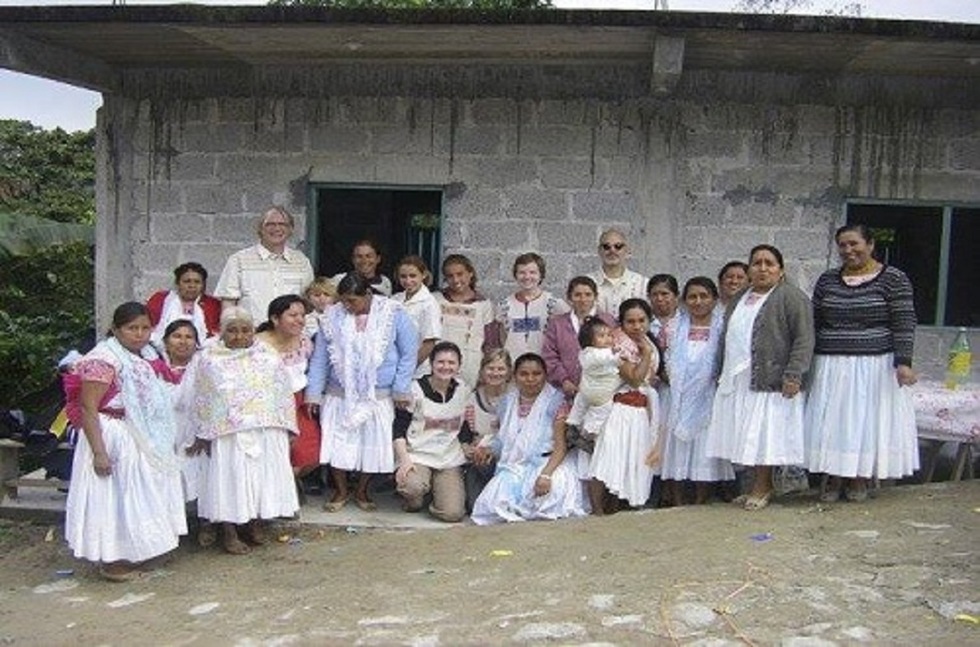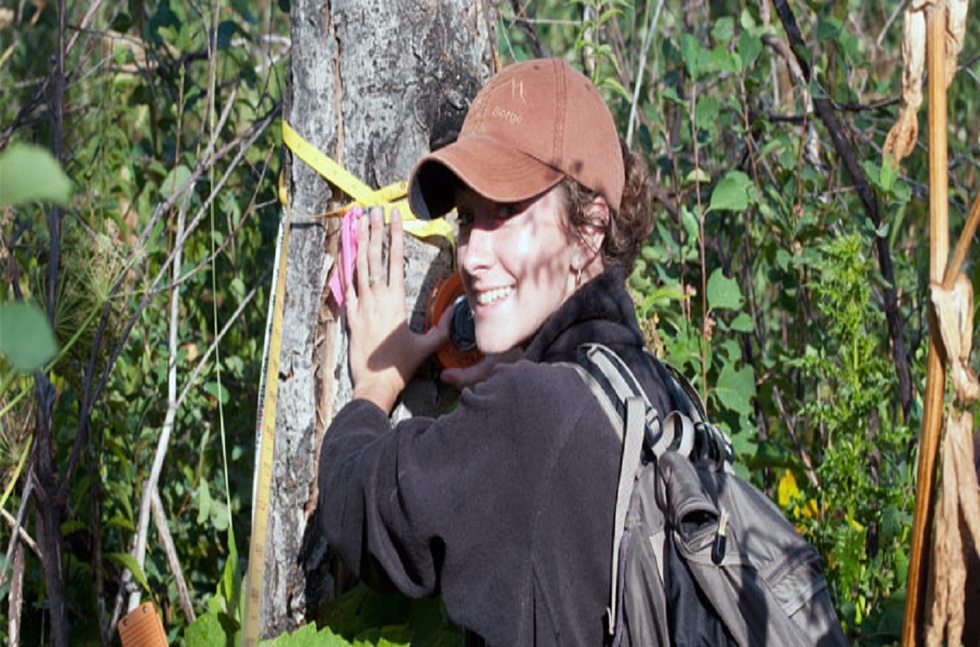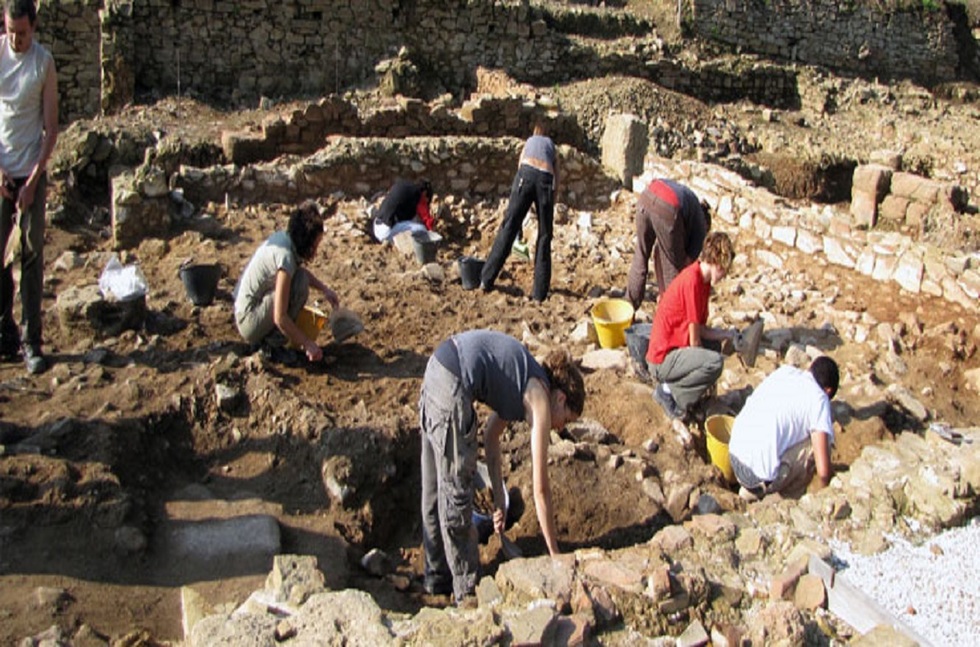12 Ways to Travel and Make a Difference
By Frommer's StaffFor your next holiday, are you looking to do more than just sit on a beach? If you're searching for a more meaningful adventure, a volunteer vacation could be just the thing. You'll travel to unusual parts of the globe, meet intriguing people, and serve others while having a once-in-a-lifetime experience. Here are 12 particularly good volunteer vacation opportunities.
What You’d Do in Malawi: The Majete Wildlife Reserve is home to a variety of animals like lions, elephants, hyenas, leopards, and more, so you’ll be helping researchers at the park obtain data they need to manage the park and ensure that all its species thrive. You’ll help with research such as monitoring the success of reintroduced predators and studying the population dynamics and distribution of the spotted hyena. During the day, you’ll check on the animals as you walk through the park and at night, you’ll drive through to count and observe all the creatures you see. Other jobs include conducting waterhole counts when animals congregate, working with camera traps to identify animals, and visiting local schools to teach children about conservation. You’ll be a part of one of the first research initiatives in the area, and your work at the reserve will make it a healthier and safer place for Africa’s most well-known animals.
After field work ends, teams stay at the research camp in the reserve. You’ll sleep in individual tents with real beds and amenities such as a small wardrobe, hot showers, electricity and Internet access. Meals are provided and you’ll enjoy African meals with fresh fish, chicken, beef, beans and rice. In your free time, you can take a guided nature walk or night drive, climb Majete Hill to see the views of Shire Valley, or go fishing in the Shire River.
Your Next Step: Earthwatch (tel. 800/776-0188; www.earthwatch.org). This 12-day project includes accommodations, food, and all related research costs. An Earthwatch membership is required.
While You’re There, Don’t Miss: Mulanje Mountain is a huge granite mass in southern Malawi, with peaks up to about 10,000 feet. Spend two nights on the mountain and explore the streams and peaks by walking the many family-friendly hiking routes here.
Official Tourism Website: www.visitmalawi.mw
Romania is home to medieval towns, painted monasteries, and soaring mountains. Its rich and unique cultural history has produced notable writers like Elie Wiesel, musicians, inventors, and athletes, and its people have thrived through a tumultuous past with tenacity and pride. However, Romania has the highest rate of child poverty in the world. There is always need for volunteers to improve the health, educational, and social resources of impoverished, disabled, and orphaned Romanian children.
What You’d Do in Romania: Since 2004 when it began its Romanian development partnership, Global Volunteers has focused on at-risk and disabled children. There are three main work projects you can participate in to help: Care for at-risk children, assistance with light labor, and teaching English in classrooms. You can aid the nursing staff with attending to infants and toddlers through play, feeding, exercises, and personal affection, especially with children who have hearing or sight impairments or mental disabilities. Other volunteers will help brighten the hospital and assist staff with plastering, painting and decorating hospital rooms. Lastly, you can help teach middle school students conversational English during the school year. No matter their age and background, these children can benefit from the nurture and kind words of a caring adult, and your contributions will ensure their lifelong development is as healthy as possible.
You’ll stay in a double-occupancy room in a comfortable tourist-class hotel that is equipped with a private bathroom, running water, a telephone and television. All your meals will be shared with the team in nearby restaurants or at the hotel. In your off time, shop in the nearby towns, hike in the countryside, or attend a soccer game.
Your Next Step: Global Volunteers (tel. 800/487-1074; www.globalvolunteers.org). This 2-week project includes lodging, food, in-country transportation, a team leader, insurance, and orientation materials.
While You’re There, Don’t Miss: Transylvania at the foot of the Carpathian Mountains is a popular destination, and many tourists travel to the cities of Brasov and Sinaia on the weekends. Pay a visit to Bran, a stunning Gothic castle near Brasov and the inspiration for Bram Stoker’s classic novel Dracula.
Official Tourism Website: http://www.romania.travel/In the capital city of Ulaanbaatar, it's a rare block that isn't populated by homeless children (many of whom in the bitter winter weather move underground into sewers and heating vents). Children who find placement in orphanages are spared the street life, but these institutions are filled to bursting and understaffed, so that meeting the most basic needs of survival for their charges is often an accomplishment. Volunteers from around the world endeavor to pour a little love and individual attention into a minimalist system of sustenance.
Today, most people living in poverty are women. Many girls are still denied a basic education and women continue to make up the majority of the world’s illiterate population. After 20 years of democracy, South Africa has made great strides in terms of gender equality, but there is still much to be done to ensure women receive equal opportunities and get the skills they need to participate effectively in the country’s economy. In the traditional rural and township culture, gender discrimination arises from religious beliefs and a male-dominated society. These ideas have influenced the workplace, with only 16% of senior management roles being held by women. By supporting women and providing them equal opportunities in education, jobs, and health care, everyone benefits. Infant mortality rates decrease, more children remain in school, incomes go up, and the cycle of poverty can be broken.
What You’d Do in South Africa: Five days a week, you’ll be actively involved in the women’s empowerment program and take on many responsibilities, depending on the needs of the projects at that given time. Opportunities include providing one-on-one education lessons with girls in local schools, giving alternative income and health workshops in the community, teaching women about various health topics and prenatal care, and working in local educational centers. All of your efforts are geared toward uplifting South African women and providing them long-term solutions to gender inequality.
You’ll be living in the quaint town of Gordon’s Bay, just outside Cape Town, and sharing either houses or apartments with your fellow volunteers. Rooms are typically shared between 2-3 people, with access to hot water, electricity, and Western-style bathrooms. During the weekends, there are many things to do, including a 2-night excursion to Cape Town where you can get a taste of the vibrant city life and visit iconic attractions such as Robben Island, where the country’s former president Nelson Mandela was imprisoned for many years, District 6 Museum, and the Castle of Good Hope. Other excursions in the area include shark cage diving, sky diving, wine tasting tours, and more.
Your Next Step: Global Vision International (tel. 888/653-6028; http://www.gviusa.com/). Lengths will vary but the 2-week trip covers accommodations, meals, local orientation, project training, and 24-hour in-country support. Insurance is not included.
While You’re There, Don’t Miss: You can’t say you’ve seen Cape Town (or even South Africa) unless you’ve stood on top of the iconic Table Mountain, an eons-old natural landmark that boasts the status of being one of the New 7 Wonders of Nature. You can ascend the mountain on foot or by cable car and spend however much time you’d like exploring the area and enjoying the magnificent views of Cape Town.
Official Tourism Website: http://www.southafrica.net/
Raleigh, NC is an ideal spot for anyone who has an interest in working with people who have special needs. Special Olympics has active programs in 170 countries and more than 4.5 million athletes with intellectual disabilities. You can get involved close to home, wherever you may live, or if your travels take you to Raleigh, North Carolina, you can volunteer at the main North American chapter. There are ways to get involved year-round, not just for the annual Olympics event. The mission of Special Olympics is to provide sports training and athletic competition in Olympic-like sports for children and adults with intellectual disabilities.
The village of Xiloxochico is 20 minutes from the market town of Cuetzalan, in the Sierra Norte region of Mexico’s Puebla state. The village is home to the Nahua, an indigenous group descended from the Aztecs that have preserved their own traditions and the Nahuatl language while also speaking Spanish. About 1.5 million Nahua people still speak Nahuatl today, and another million only speak Spanish. There are 11 indigenous linguistic families spread out through Mexico and although there are national laws defining the rights of indigenous languages in the country, indigenous language speakers still face discrimination in their communities, including in educational settings.
In Xiloxochicho, there is still need for support of bilingual education in order to teach children the Nahuatl language and keep it alive. Chayojkila Xiloxochico is an indigenous elementary school that was founded in 1999 by a group of parents with support of teachers from CONAFE, Mexico’s National Council on Educational Development. The school needs assistance in building additional classrooms, restrooms, and a playground space.
What You’d Do in Mexico: You’d start off the day at Cuetzalan and drive by bus to Xiloxochicho where you’d begin work to help the Nahua community. Duties include digging, painting, and installing windows at the bilingual school. During breaks you’d talk with community members or play a quick game of soccer with the kids.
In Cuetzalan, participants will stay at Taselotzin, an eco-lodge run by Nahua women. The lodge has indoor plumbing, hot water, and electricity. Your meals would have staples in Mexican cuisine and include plenty of fresh fruits and vegetables. Breakfast might comprise hot chocolate, pan dulce, a classic sweet bread in Mexico and other Latin American countries, and fresh pineapple and melon. Lunch would have corn tortillas, while soup and beans could make up your dinner. When you’re not working, there are many things to do and see in Cuetzalan, such as one of the region’s largest indigenous markets.
Your Next Step: Global Citizens Network (tel. 612/436.8270; www.globalcitizens.org). The trip, which is about 10 days, covers lodging and meals, in-country transportation, orientation materials, insurance, and a team leader in charge of logistics.
While You’re There, Don’t Miss: A 3-hour car ride away from Cuetzalan is the Capilla del Rosario, or the Rosary Chapel, thought by many to be one of the best chapels in Mexico. While you’re in the heart of Puebla, stop by the chapel to see the masterpiece of baroque architecture and decoration. Everything from the magnificent onyx pulpit to the staggering amount of gold covering the surface contribute to the spectacular decor that defines Mexican baroque style.
Official Tourism Website: http://www.visitmexico.com/
Waterton Lakes National Parks is one of the few places where you can get a feel for what North America was like before European settlers arrived. Only about 5 percent of Canada’s native grasslands remain, and they are here, filled with iconic native animals such as grizzly bears, eagles, wolves, and bighorn sheep.
The leaders of this national park strives to use natural resources like wolves and wildfire to create a healthy ecosystem. But over hundreds of years, through human interventions such as hunting, we have created an imbalanced natural relationship and the goal of the research at the national park is to restore these forces of nature. Wolves have also recently made a comeback in the park, and researchers think that as a result, elks are not mowing down aspen shoots as expected. Baby aspen draws a lot of elk, and elk attracts wolves, which makes elks skittery and less likely to linger as they eat. Your work at the park would help researchers find out if their hypothesis is correct and see what they can do to foster natural relationships between the forces at work in this wilderness.
What You’d Do in Alberta: At the park, you will get once-in-a-lifetime opportunities such as hiking off-trail through parts of the park that tourists never see, past grizzly bears and elk, to help researchers unravel the complex interactions between wolves, elk, and fire. You’ll measure how much vegetation elk are consuming, record wildlife sightings, track wolves by driving or hiking to wolf dens, and more.
You’ll stay in the Waterton Lakes National Park Research House in Waterton Village, a town nestled in the mountains with views of peaks and a gorgeous lake. The team will plan and prepare meals together and bring packed lunches out into the field. There are a lot of local, organic food on the expedition such as fresh salmon, bison, and fruits and vegetables. From the research station in Waterton Village, you’ll get to see views of the mountains and sunsets. The park is home not just to wolves and elk, but also moose, bison, trumpeter swans, and sandhill cranes, so look forward being able to spot wildlife on a daily basis.
Your Next Step: Earthwatch Institute (tel. 800/776-0188; www.earthwatch.org) The 7-day expedition includes accommodations, food, and all related research costs.
While You’re There, Don’t Miss: In 1932, Waterton Lakes National Park and Glacier National Park in Montana became the world's first International Peace Park due to the work between the two nation's rotary clubs. After your work is done at Waterton, travel about an hour and a half, just across the border, to see the park in Montana. Take your time to enjoy the park, a World Heritage Site, as there are more than 700 miles of trails, and a variety of natural sights such as forests, meadows, mountains, and beautiful lakes.
Official Tourism Website: http://travelalberta.us/Researchers know that for hundreds of years, Populonia was at the forefront of the ironworks industry in the Mediterranean. The oldest features uncovered in Populonia, two mound tombs belonging to wealthy local families, date back to the seventh century B.C. However, we know little about the political, economic, and religious changes brought by the arrival of the Romans in this region of the Tuscan coast. In order to reconstruct the history of Populonia, researchers must answer many questions: When and where did iron smelting take place? Who were the ancient people that lived and worked in the iron smelting industry, the harbor, and the mines? How was the society influenced by metalworking and trade?
By joining this expedition, you’ll aid researchers in filling gaps in knowledge about the Populonia area from the Etruscan period (beginning in 800 B.C.) and up to the early Middle Ages (A.D. 600). You’ll help researchers see how the Etruscan and Roman economies functioned and how the Romans took advantage of the natural resources of the territories they ruled.
What You’d Do in Italy: Teams will be split between two sites; The first team will be in the Etruscan cemetery of San Cerbone and the early Roman section of Populonia. The tombs were long buried beneath iron slag heaps and misled excavators at the beginning of the 20th century partly destroyed many tombs when they tried to dig them up. Your work will help preserve a site that might otherwise be lost.
The second team will work between the walls of a Roman villa on Poggio del Molino (Windmill Hill), overlooking the Mediterranean Sea. The villa was built at the start of the 1st century A.D. and is one of the few existing sources of information from the end of the 5th century, when people continued living at the villa. At both sites, you’ll be excavating artifacts, mapping excavation sites, recording and analyzing finds, conserving artifacts, and rebuilding original objects from fragments you discover.
You’ll stay in modern apartments in the village of Populonia Stazione. You’ll get to make your own breakfast in the kitchen, while lunch will be at a local cafe, and in the evenings staff members will serve home-cooked Italian dinners. Your accommodations are close to the village’s center, where you can visit a pizzeria, a bakery, and two small grocery stores.
Your Next Step: Earthwatch Institute (tel. 800/776-0188; www.earthwatch.org) Volunteers can choose from 7-day or 13-day expeditions. The trip includes accommodations, food, and all related research costs.
While You’re There, Don’t Miss: There are endless exciting sights in Tuscany, but of course the signature destination is the Leaning Tower of Pisa. Indulge yourself with taking the classic tourist picture pose with the tower, but don’t forget that you can go inside and climb up 300-odd steps to get great views of the city.
Official Tourism Website: http://www.italia.it/
Of all of China’s sights, the panda bear species is one of its most iconic, and a hallmark of the country’s rich ecosystem. Adored across the world, pandas are beloved for their drowsy nature and cuddly appearance. Although they have traditionally called the mountains of south central China home, today the future of the Giant Panda species is uncertain. Habitat destruction, poaching, and deforestation have drastically reduced the population, and there are currently fewer than 1600 pandas left in the wild.
There are currently many ongoing conservation efforts in the field, from creating national parks in order to prevent further deforestation, to captive breeding programs which aim to release new pandas into the wild to help restore a healthy population. The Frontier-China Panda Conservation Project is one such program—its researchers examine panda behavior and plan to breed pandas and release them into the wild, when possible. The project needs volunteers like you in order to carry out this research, and your help is essential to ensure the survival of this magnificent species.
What You’d Do in China: At the Bifengxia Panda Base, your duties include feeding the pandas and preparing their food, helping with daily maintenance like cleaning panda enclosures, and assisting with running the park. The sanctuary scientists may also need your assistance with collecting data about the pandas, conducting medical examinations and breeding efforts, and more.
You’ll be staying at a hostel close to the sanctuary, with hot water and a bathroom at your disposal, although internet communication might not always be available. You’ll be provided with three meals a day, which will mostly be authentic Chinese cuisine. The project is based in Ya’an, less than three hours from Chengdu in Sichuan province. Take time to visit Chengdu and explore all the great sights and aromatic foods the city has to offer, from Wenshu Yuan Monastery to dandan noodles, a Sichuan staple.
Your Next Step: Frontier (tel. 949/336-8178; www.frontiergap.com) The trip, which offers one and two week durations, includes pre-departure support, food, accommodations, local orientation and training, and in-country emergency support. Insurance is not provided.
While You’re There, Don’t Miss: Although most people would say going to a panda breeding center is already at the top of their bucket list when they go to Chengdu, another must-see is Mount Qingcheng, one of China’s most famous Taoist mountains. The trek up the mountain is not for everyone, but the sights along the way might make the taxing and sweaty trip worth it. Your views include peaks, lush foliage, numerous ancient palaces, and even a winding river or two.
Official Tourism Website: http://www.travelchina.gov.cn/





